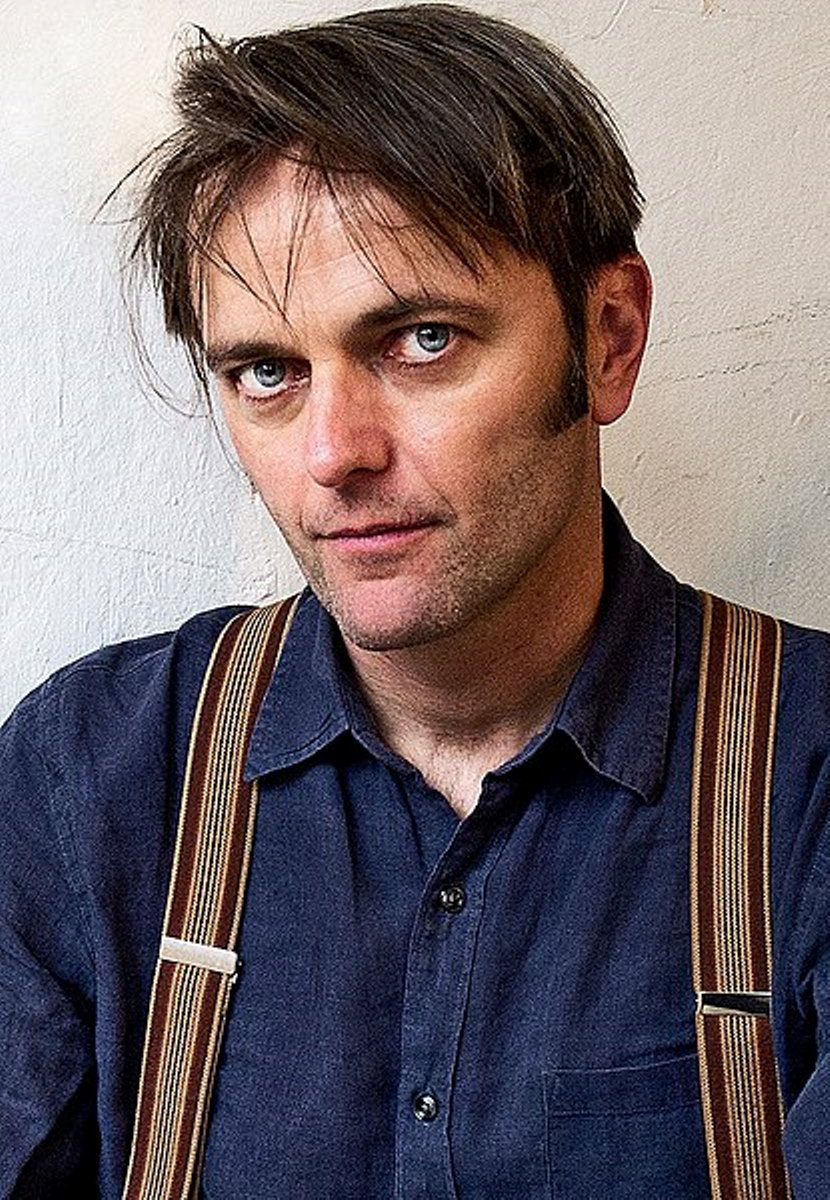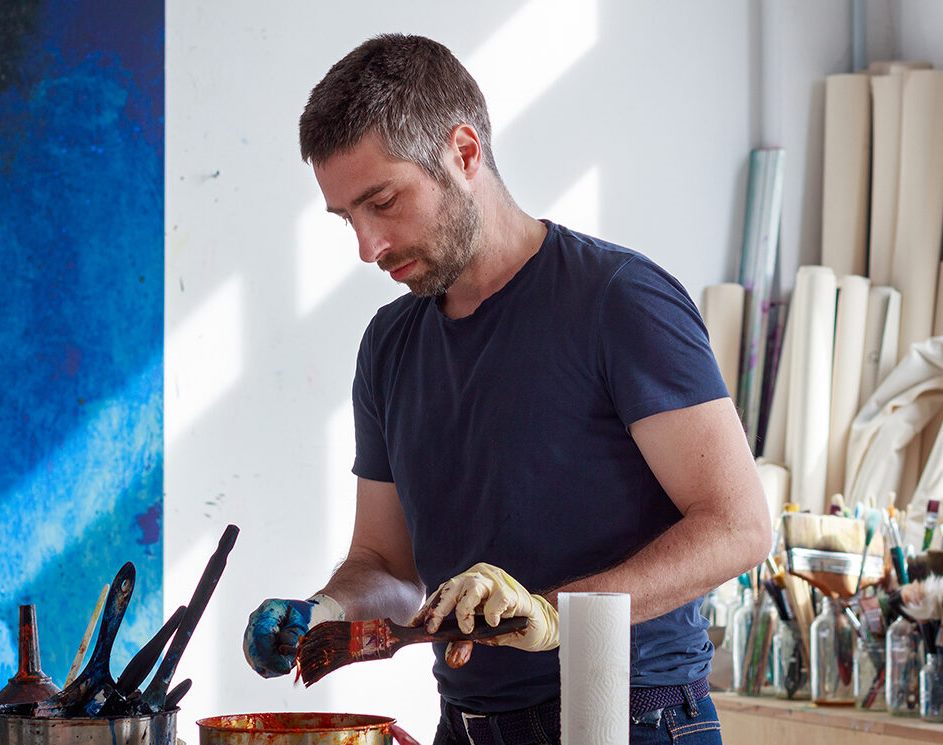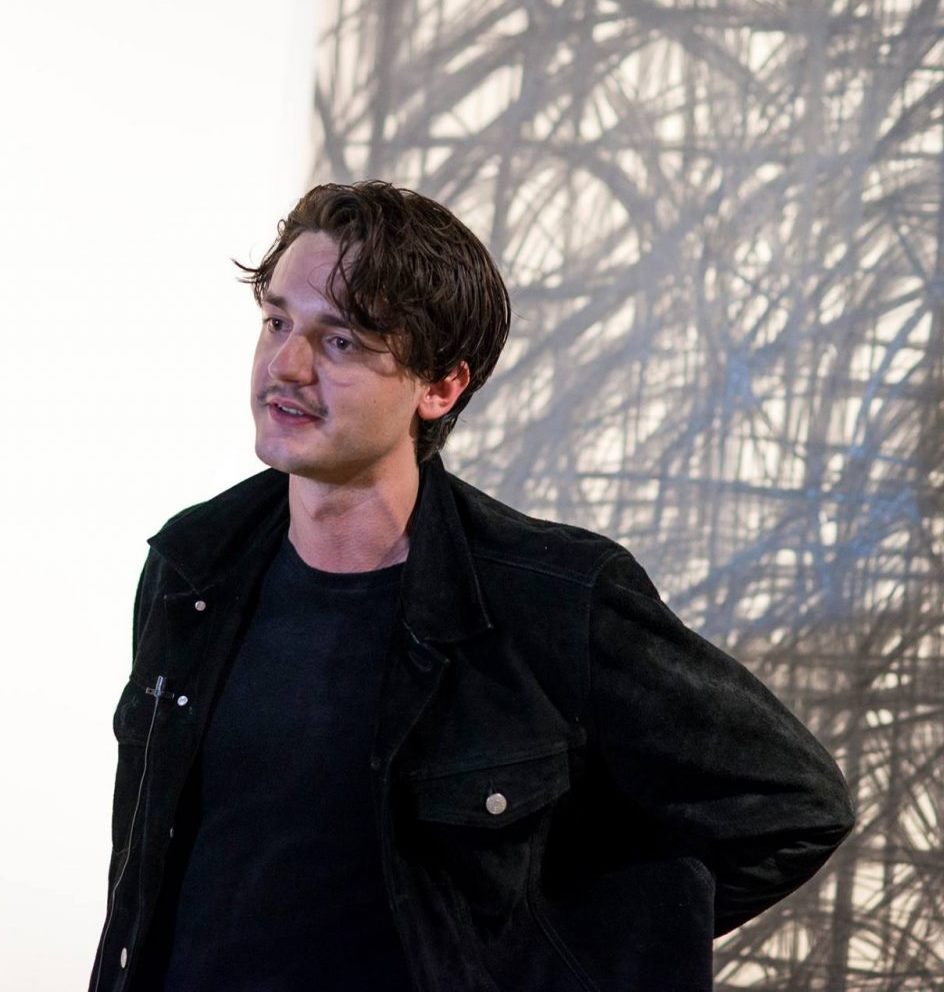
A500_3: Modern, Post War & Contemporary

Wolfgang Tillmans is a German photographer. His diverse body of work is distinguished by observation of his surroundings and an ongoing investigation of the photographic medium’s foundations.
Tillmans was the first photographer – and also the first non-British person – to be awarded the Tate annual Turner Prize. He has also been awarded the Hasselblad Award, the Royal Photographic Society's Centenary Medal, the Royal Academy Summer Exhibition's Charles Wollaston Award, The Culture Prize of the German Society for Photography, and is an Academician of the Royal Academy of Arts, London.

Wolfgang Tillmans is a German photographer. His diverse body of work is distinguished by observation of his surroundings and an ongoing investigation of the photographic medium’s foundations.
Tillmans was the first photographer – and also the first non-British person – to be awarded the Tate annual Turner Prize. He has also been awarded the Hasselblad Award, the Royal Photographic Society's Centenary Medal, the Royal Academy Summer Exhibition's Charles Wollaston Award, The Culture Prize of the German Society for Photography, and is an Academician of the Royal Academy of Arts, London.

Wolfgang Tillmans is a German photographer. His diverse body of work is distinguished by observation of his surroundings and an ongoing investigation of the photographic medium’s foundations.
Tillmans was the first photographer – and also the first non-British person – to be awarded the Tate annual Turner Prize. He has also been awarded the Hasselblad Award, the Royal Photographic Society's Centenary Medal, the Royal Academy Summer Exhibition's Charles Wollaston Award, The Culture Prize of the German Society for Photography, and is an Academician of the Royal Academy of Arts, London.

Cornelius Völker is a German painter who lives and works in Düsseldorf and New York.
He studied at the Dusseldorf Academy of Arts and is a professor of painting at the Münster Academy of Art.
Völker's work is characterized by colorful, figurative representations of everyday situations and even insignificant everyday objects in part abstract, part figurative interpretations. The artist has a special method of working with paint and creates photorealistic paintings.

Cornelius Völker is a German painter who lives and works in Düsseldorf and New York.
He studied at the Dusseldorf Academy of Arts and is a professor of painting at the Münster Academy of Art.
Völker's work is characterized by colorful, figurative representations of everyday situations and even insignificant everyday objects in part abstract, part figurative interpretations. The artist has a special method of working with paint and creates photorealistic paintings.

Cornelius Völker is a German painter who lives and works in Düsseldorf and New York.
He studied at the Dusseldorf Academy of Arts and is a professor of painting at the Münster Academy of Art.
Völker's work is characterized by colorful, figurative representations of everyday situations and even insignificant everyday objects in part abstract, part figurative interpretations. The artist has a special method of working with paint and creates photorealistic paintings.

Christian Awe is a German urban artist known for his large-scale murals.
He was educated at the University of Art in Berlin, where he lives and works.
Christian Awe describes his work as urban expressionist painting, his abstract works are saturated with vivid colors. Awe uses spray paint and acrylics, ink and watercolor, marker and oil pastel. His technique is characterized by scraping off the top layers of applied paint in order to expose those already hidden.

Christian Awe is a German urban artist known for his large-scale murals.
He was educated at the University of Art in Berlin, where he lives and works.
Christian Awe describes his work as urban expressionist painting, his abstract works are saturated with vivid colors. Awe uses spray paint and acrylics, ink and watercolor, marker and oil pastel. His technique is characterized by scraping off the top layers of applied paint in order to expose those already hidden.

Christian Awe is a German urban artist known for his large-scale murals.
He was educated at the University of Art in Berlin, where he lives and works.
Christian Awe describes his work as urban expressionist painting, his abstract works are saturated with vivid colors. Awe uses spray paint and acrylics, ink and watercolor, marker and oil pastel. His technique is characterized by scraping off the top layers of applied paint in order to expose those already hidden.

Diango Hernández is a Cuban artist who lives and works between Düsseldorf, Germany and Havana. From 1994 to 2003, Hernández was involved with Ordo Amoris Cabinet, which he co-founded with Ernesto Oroza, Juan Bernal, Francis Acea and Manuel Piña. He is married to artist Anne Pöhlmann.

Diango Hernández is a Cuban artist who lives and works between Düsseldorf, Germany and Havana. From 1994 to 2003, Hernández was involved with Ordo Amoris Cabinet, which he co-founded with Ernesto Oroza, Juan Bernal, Francis Acea and Manuel Piña. He is married to artist Anne Pöhlmann.

Diango Hernández is a Cuban artist who lives and works between Düsseldorf, Germany and Havana. From 1994 to 2003, Hernández was involved with Ordo Amoris Cabinet, which he co-founded with Ernesto Oroza, Juan Bernal, Francis Acea and Manuel Piña. He is married to artist Anne Pöhlmann.

Daniel Lergon is a German abstraction artist who experiments with light effects and chemical reactions.
Daniel Lergon lives and works in Berlin. He creates color combinations that convert infrared and ultraviolet light into visible light, and uses reflective fabrics and oxidizing metal surfaces. Lergon also works with colorless transparent varnish without the addition of pigments: the paintings result from the special reflection of light on the varnish and the painting base.

Hubert Scheibl is an Austrian painter, draughtsman, and photographer, one of the most important Austrian representatives of abstract painting.
Hubert Scheibl studied with Arnulf Rainer at the Academy of Fine Arts in Vienna, lived in New York for several years, which influenced his work. In the 1980s he was a member of the Neue Wilden group.

Jana Schröder is a German abstraction artist.
She studied at the Düsseldorf Academy of Art and lives and works in Düsseldorf.
Jana Schröder creates paintings that are largely driven by the movement of the paint itself. The result is multilayered labyrinths of webbing, in which elements of automatic writing and winding brushstrokes intertwine to guide the viewer's wandering gaze.

Peppi Bottrop is a German graphic artist who lives and works in Sicily.
He graduated from the Dusseldorf Academy of Arts and has participated in many exhibitions.
Bottrop is a color-blind painter who uses graphite on canvas which he paints directly on the wall. His monochrome paintings depict rectangles, circles and triangles - they are expressive, their skeleton-like abstract outlines reminiscent of a kind of music.

Jorinde Voigt is a German artist, best-known for large-scale drawings that develop complex notation systems derived from music, philosophy, and phenomenology. She is a professor of painting and drawing at the University of Fine Arts Hamburg. Voigt lives and works in Berlin.

Michael Müller is a German painter-painter and sculptor.
He studied sculpture and fine art at the Art Academy in Düsseldorf and lives and works in Berlin.
Michael Müller is constantly expanding his methods of artistic expression, combining works on paper with painting, text work, sculpture, found objects, music and performance.

Michael Müller is a German painter-painter and sculptor.
He studied sculpture and fine art at the Art Academy in Düsseldorf and lives and works in Berlin.
Michael Müller is constantly expanding his methods of artistic expression, combining works on paper with painting, text work, sculpture, found objects, music and performance.

Torben Giehler is a German abstraction artist.
After studying at the Boston Academy of Art he returned to Germany.
Giehler's style of painting is based on abstract compositions of geometric forms. He digitally edits his sketches and then uses multiple layers of acrylic paint to create large-scale works. In this way the artist manages to convey his own impressions of mountains, streets or buildings.

Franz Ackermann is a German media artist.
He studied at the Academy of Fine Arts in Munich and at the University of Fine Arts in Hamburg, lives and works in Berlin and Karlsruhe.
Franz Ackermann's work includes drawings, watercolors, murals, paintings and installations, which he complements with photographic works, projections and architectural models. His works deal with the themes of tourism, globalization and urbanism and reflect the social changes and political problems caused by increasing globalization.

Serban Savu is a Romanian artist living and working in Cluj, Romania.
He is one of the main representatives of the so-called Cluj School of painting. Savu is known for his figurative paintings depicting the life of Romanians today: how people work and rest, go on dates, grieve and rejoice. The artist also depicts the consequences of the social and economic crisis in the country.

Hideaki Kawashima is a Japanese artist who lives and works in Tokyo.
After graduating from the University of Tokyo, he underwent two years of Buddhist temple training before beginning his career as an artist in 2001.
Hideaki Kawashima uses portrait painting and self-portrait masks to show the ambiguity of human life. His characters with expressive eyes express a spectrum of emotions: fear, desire, anxiety, longing. Yet these emotions are ambiguous. Kawashima brings touches of folklore, mythology and surrealism to androgynous faces.

Tomoko Nagai is a Japanese artist who lives and works in Japan.
She graduated from the University of Fine Arts and Music of Aichi Prefecture with a degree in oil painting.
Tomoko Nagai is known for her whimsical, puppet fantasy creatures painted in mixed media. She depicts animals, children, colorful trees and mushrooms as in a theatrical setting. Nagai's most famous work is located in a kindergarten in one of Japan's earthquake-stricken areas, in Shichigahama, Miyagi, where she painted the walls of a swimming pool.

Zhuang Hong Yi is one of China's most famous artists.
He currently lives and works in a studio in China and a residence in Switzerland. Zhuang received his first education at the Sichuan College of Fine Arts in China and moved to the Netherlands in 1992, where he continued his studies at the Minerva Academy in Groningen.
He received a powerful boost of inspiration when he saw the famous tulip fields among the picturesque Dutch landscapes. The powerful blossom of nature has been the main subject of Zhuang Hong Yi's creations ever since. His works are characterized by bold color schemes and intricate, repetitive floral motifs.
































































